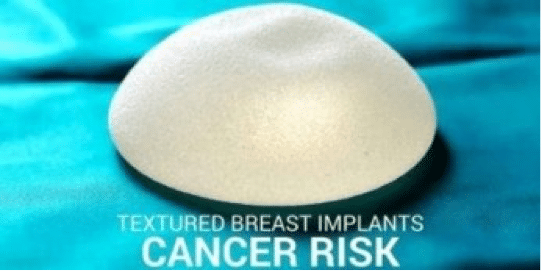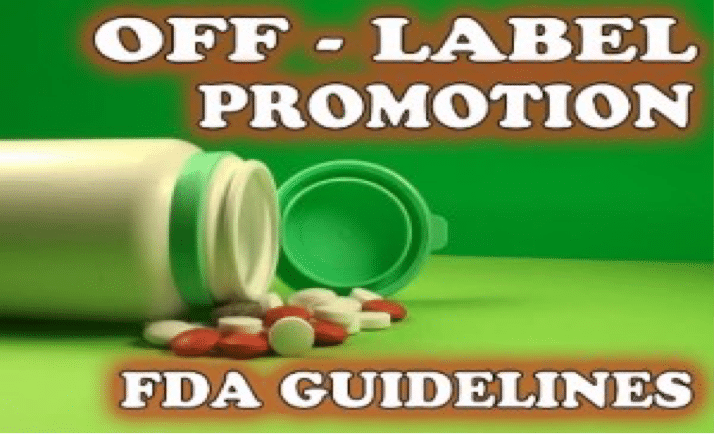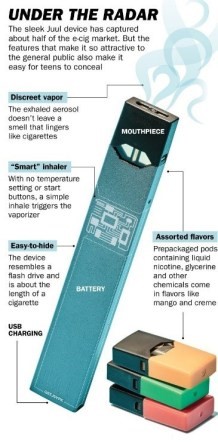FDA FINALLY MOVING ON BREAST IMPLANTS: Once again lagging behind the world in healthcare oversight
U.S. health officials are now finally taking an assertive position regarding women getting breast implants by stating that stronger warnings and more details about the possible risks and complications including links to cancer. Why has there been a multi-year FDA delay on this in the USA?
(MASS TORT NEWS) U.S. health officials are now finally taking an assertive position regarding women getting breast implants by stating that stronger warnings and more details about the possible risks and complications including links to cancer. Why has there been a multi-year FDA delay on this in the USA?
The Food and Drug Administration said that manufacturers should add a warning highlighted by a “black box warning” – the most serious type – to be provided to women receiving or considering implants.
The primary makers of breast implants approved for use in the United States include:
Allergan, Inc.
Ideal Implant, Inc.
Mentor World Wide, LLC (Johnson & Johnson)
Sientra, Inc.
Melissa Shirley vs. Mentor Worldwide (J&J) Complaint USDC ND Georgia (May 15, 2017)
According to a complex analysis of FDA adverse event data, the number of suspected breast implant injuries jumped from an average of fewer than 200 a year through 2016, before the FDA’s more rigorous reporting rules, to 4,567 events in 2017 and at least 8,242 in the first half of 2018. More than 10 million women worldwide have received breast implants over the last decade, a remarkable comeback for a medical product that had suffered a crippling safety scandal and a lengthy ban in the United States.
The agency was aware of the true number of reported injuries but did not disclose them until recently. In Europe, some manufacturers have avoided reporting ruptures altogether, Dutch regulators were told. This was discovered during the International Consortium of Investigative Journalists long term investigation titled, Implant Files investigation , which revealed the ongoing health problems plaguing many thousands of women with breast implants as part of its global research project that was released in November 2018.
HOW THE FDA LAGS BEHIND THE WORLD
Australia’s Therapeutic Goods Administration (TGA) launched an effort monitor the association between breast implants and anaplastic large cell lymphoma, more than doubling the recognized number of cases identified among Australian patients between September 2016 and April 2017.
Researchers from the TGA published a study in May indicating that side effects of textured breast implants may be linked to a 14 times higher risk of ALCL in some cases.
The TGA has estimated that the breast implant lymphoma risk may be between 1-in-1,000 and 1-in-10,000, with most cases occurring between 3 and 14 years after implant, but the median being 8 years and some cases diagnosed as much as 37 years after breast surgery,
The agency is also recommending patients complete a checklist to make sure they understand all the possible side effects of the implants, such as scarring, pain, rupture and even a rare form of cancer.
“We have heard from many women that they are not fully informed of the risks when considering breast implants,” the agency said in a statement detailing the recommendations.
The agency also wants companies to explain that breast implants often require repeat surgeries and they should not be considered lifelong devices. About 1 in 5 women who get implants for cosmetic reasons need to have them removed within eight to 10 years, according to the FDA.
The agency will take public comment on the proposed guidelines before adopting them.
The new proposal is the FDA’s latest attempt to manage safety issues with the devices primarily used for breast augmentation, the most frequently performed cosmetic surgical procedure in the U.S. Roughly 400,000 patients get implants each year, 100,000 of them after cancer surgery.
As outlined Wednesday, manufacturers would not be required to adopt the boxed warning and checklist, noted Madris Tomes, a former FDA staffer. “The FDA needs to enforce the use of this and not just hope it’s used,” said Tomes, who now runs a company that analyzes device injuries and malfunctions. “Women deserve to know what is being implanted and need to know not to take these risks lightly.”
In recent years, the FDA and regulators elsewhere have grappled with a link between a rare cancer and a type of textured implant. In July, the FDA called on manufacturer Allergan to pull its Biocell implant after it was tied to heightened risk of a form of lymphoma. The company issued a worldwide recall for the implants, which had already been restricted or removed from numerous countries.
In a separate issue, the FDA has received thousands of reports from women who blame their implants for a host of health problems including rheumatoid arthritis, chronic fatigue and muscle pain. Earlier this year, the FDA held a meeting at which dozens of women urged the agency to place new warnings and restrictions on implants.
The FDA has stood by its long-standing position that the implants are essentially safe so long as women understand they can have complications. But following the meeting, the agency said women should get more explicit, understandable information about implant risks.
The devices have a silicone outer shell and are filled with either saline or silicone. The FDA’s draft guidelines recommend manufacturers clearly disclose and list their ingredients for patients.
Breast augmentation remains the most common cosmetic surgical procedure in the U.S. with more than 300,000 performed each year, according to the American Society of Plastic Surgeons.
In addition to the warning notice to Mentor Worldwide in March 2018 (above), the FDA has taken additional steps to ensure the agency is monitoring the safety and risks of breast implants. The FDA has coordinated with the American Society of Plastic Surgeons and the Plastic Surgeons Foundation to develop the Patient Registry and Outcomes for Breast Implants and Anaplastic Large Cell Lymphoma (BIA-ALCL) Etiology and Epidemiology (PROFILE), which collects real world data regarding patients who have a confirmed diagnosis of BIA-ALCL. The data collected from this registry, have contributed to a better understanding of BIA-ALCL and FDA communication updates to the public regarding BIA-ALCL.
FDA MARCH 2019 WARNING ON IMPLANTS

FDA News Release March 20, 2019
FDA issues warning letters to two breast implant manufacturers for failure to comply with post-approval study requirements
For Immediate Release
Today, the U.S. Food and Drug Administration issued warning letters to two breast implant manufacturers for failure to comply with their requirements, under their premarket approval orders, to conduct post-approval studies to assess the long-term safety and risks of their silicone gel-filled breast implants.
The FDA issued warning letters to Mentor Worldwide LLC of Irvine, California, and Sientra, Inc. of Santa Barbara, California. Every manufacturer of approved silicone gel-filled breast implants is required to conduct post-approval studies to further evaluate safety and effectiveness of the products and to answer additional scientific questions about the long-term safety and potential risks of breast implants that their premarket clinical trials were not designed to answer.
“Post-approval requirements are critical to ensuring the safety and effectiveness of the medical products we regulate and we’ll continue to hold manufacturers accountable when they fail to fulfill these obligations,” said FDA Commissioner Scott Gottlieb, M.D. “We’re issuing these warning letters based on the manufacturers’ low recruitment, poor data, and low follow-up rates in their required post-approval studies. We expect these manufacturers to meet the pre-specified study requirements in order to ensure the collection of long-term data that can be used to inform long-term patient safety. Post-approval studies, along with other surveillance tools such as adverse event reports, registries, and scientific literature, allow the FDA to help ensure the safety of medical devices and protect patients.”
The FDA’s warning letter to Mentor Worldwide LLC (Mentor) noted several serious deficiencies in the manufacturer’s post-approval study for its MemoryShape breast implant, first approved in 2013, including that the manufacturer had failed to enroll the required number of patients in the study. The action also notes Mentor had poor follow-up rates with patients in the study. Finally, the FDA notified Mentor that there were significant data inconsistencies in the study, including poor patient accounting and missing race and ethnicity data. While the FDA had concluded after reviewing several interim study reports submitted by Mentor that progress on the post-approval study appeared adequate at that time, the agency advised Mentor of concerns about patient enrollment, follow-up rates and data inconsistencies.
Mentor’s failure to address these concerns and comply with its post-approval study requirements is a violation of the firm’s pre-market approval order.
The FDA’s warning letter to Sientra, Inc. (Sientra) noted a serious deficiency in the manufacturer’s post-approval study for its Silicone Gel Breast Implants, first approved in 2013. The manufacturer had poor follow-up rates with patients. Currently, the manufacturer reported a follow-up rate of 61 percent, which is below the target follow-up rate. In the response to the manufacturer’s most recent interim study report, the FDA notified the manufacturer that the study progress was inadequate because of low follow-up rates. Sientra’s failure to address these concerns and comply with its post-approval study requirements is a violation of the firm’s pre-market approval order.
The FDA requested responses from both manufacturers within 15 working days of the issuance of the warning letters, with details about how the noted violations will be corrected. The FDA may take action for a failure to comply with post-approval orders, including pursuing applicable criminal and civil penalties, where appropriate.
The FDA’s actions today are part of the agency’s ongoing commitment to its public health mission of ensuring patient access to safe and effective medical devices. As part of the Medical Device Safety Action Plan, the FDA committed to streamlining and modernizing how the agency implements post-market actions to address device safety issues to make responses to risks more timely and effective, including taking actions against manufacturers when their post-market studies are non-compliant with any study requirements. The FDA has issued several warning letters in recent years to manufacturers who did not adequately fulfill certain postmarket study requirements, reflecting the agency’s commitment to take more aggressive actions against manufacturers who fail to comply.
In addition to the required post-approval studies, the FDA has taken additional steps to ensure the agency is monitoring the safety and risks of breast implants. For instance, FDA staff have coordinated with the American Society of Plastic Surgeons and the Plastic Surgeons Foundation to develop the Patient Registry and Outcomes for Breast Implants and Anaplastic Large Cell Lymphoma (BIA-ALCL) Etiology and Epidemiology (PROFILE), which collects real world data regarding patients who have a confirmed diagnosis of BIA-ALCL. The data collected from this registry, have contributed to a better understanding of BIA-ALCL and FDA communication updates to the public regarding BIA-ALCL.
Additionally, the FDA has worked with multiple stakeholders to facilitate the development of the National Breast Implant Registry (NBIR) to provide a platform for collecting additional real world data on the safety and performance of breast implants. This newly launched registry will greatly add to the information we collect in our own post-approval studies about the long-term safety of breast implants, and potentially enhance our understanding of the long-term safety and risks associated with breast implants.
The FDA remains committed to thoughtful, scientific, transparent, public dialogue concerning breast implant safety and effectiveness. The FDA welcomes public dialogue about breast implant safety and risk at the upcoming public meeting of the General and Plastic Surgery Devices Panel at the FDA’s headquarters in Silver Spring, Maryland on March 25-26, 2019, which will also be available via webcast.
Health care professionals and consumers should report any adverse events related to breast implants to the FDA’s MedWatch Adverse Event Reporting program. The FDA monitors these reports and takes appropriate action necessary to ensure the safety of medical products in the marketplace.\ end of FDA notice
WHAT’S IN BREAST IMPLANTS
Shocking Ingredients Found In Dow Silicone Implants
When women are told that their implants contain silicone or saline, they often don’t tend to ask if anything else is being used alongside it. They certainly aren’t told this by the surgeons, who more than likely don’t even know themselves.
Check out the long list of alarming ingredients used in Dow’s silicone implants which came out during their court case when they were forced to disclose what was in their dangerous implants:
- Methyl ethyl ketone (neurotoxin)
- Cyclohexanone (neurotoxin)
- Isopropyl Alcohol
- Denatured Alcohol
- Acetone (used in nail polish remover and is a neurotoxin)
- Urethane
- Polyvinyl chloride (neurotoxin)
- Amine
- Toulene
- Dicholormethane (carcinogen)
- Chloromethane
- Ethyl acetate (neurotoxin)
- Silicone
- Sodium fluoride
- Lead Based Solder
- Formaldehyde
- Talcum powder
- Oakite (cleaning solvent)
- Methyl 2- Cynanoacrylates
- Ethylene Oxide (Carcinogen)
- Xylene (neurotoxin)
- Hexon
- 2-Hedanone
- Thixon-OSN-2
- Stearic Acid
- Zinc Oxide
- Naptha (rubber solvent)
- Phenol (neurotoxin)
- Benzene (carcinogen/neurotoxin)
- Lacquer thinner
- Epoxy resin
- Epoxy hardener
- Printing Ink
- Metal cleaning acid
- colour pigments as release agents
- heavy metals such as aluminium (neurotoxin linked to Alzheimer’s and auto immune disorders)
- Platinium
- Silica * (2)
Types of Breast Implants Used Today
Silicone Implants
Many women opt out of having silicone implants due to the Dow Corning Lawsuit. But a growing number of women are now choosing to have them again due to the implant’s ability to look more natural than other types. These implants have an elastic type envelope which is pre-filled with a sticky, clear, jelly-like form of silicone. There are a few varieties of shapes to choose from, with smooth or textured surfaces.
With the FDA allowing silicone implants to come back on the market, it is very concerning to know that statistics show (according to Nancy Bruning, author of Breast Implants — Everything You Need To Know) that almost half of all women who have this type of implant will experience a rupture within 6-10 years, and one in five women were found to have silicone migrate to other parts of their bodies.


Saline implants – silicone outer shelL
Saline Implants
Saline implants are commonly thought to be safer, yet they have their own problems. Saline implants have a silicone shell filled with a saline water, which is salt based and ‘sterile.’ Some types are inserted empty which the surgeon will inflate during surgery with this saline liquid. There is another type of saline implant, which also has a silicone shell, but the inside contains a gel like texture. There are smooth surface saline implants and textured surface saline implants.
According to research experts, 60% of women with these types of implants have complications within four years, and one out of five require additional surgery within three years. This seems to be a cause for concern, since patients are commonly told that implants either never need to be removed or should be removed every ten years.
Possible Side Effects
This is what your surgeon does not tell you:
- tenderness, lumpiness, or discomfort around the implants
- change in the shape of your breast(s)
- change in the consistency of your breast, such as increased softness
- change in the way your breast moves – all of these symptoms may be a sign your implant has ruptured.
- hardening of breast tissue
- muscle pain
- pain and swelling of the joints
- pain in the soft tissues
- a burning sensation of pain
- tightness, redness, or swelling of the skin
- swollen glands or lymph nodes
- unusual, extreme, or unexplained fatigue
- swelling of the hands and feet
- unusual hair loss
- rashes
- skin thickening or hardening
- dry eyes, mouth, or vagina
- loss of memory, mental confusion, or ‘fogginess’
- autoimmune disorders such as fibromyalgia, rheumatoid arthritis, scleroderma, multiple chemical sensitivity disorder, cancer, and biotoxicity problems.
THE FDA FAILS AGAIN
The FDA has also posted an unusually blunt warning on its website. It advises patients that the risk of complications is high and says flatly: “You should assume that you will need to have additional surgeries.”
But the FDA has not required a black box safety warning. The agency said that other threats posed by breast implants — which its website lists as including “breast tissue atrophy,” “wrinkling of the implant that can be felt or seen through the skin” and “infection, including Toxic Shock Syndrome” — are so widely known that further action was unnecessary.
Since the FDA’s decision, the breast implant business has boomed, now exceeding $1 billion in revenue a year and projected to reach $2 billion by 2025. More than 1.6 million women worldwide received cosmetic breast implants in 2017, including an estimated 345,236 in the U.S., 235,950 in Brazil, 67,478 in Mexico and 54,045 in Italy. As of 2017, breast enlargement was the most common cosmetic surgery in the world.
STAY TUNED TO MASS TORT NEWS FOR THE REST OF THE STORY ON FDA FAILURES www.masstortnews,org
Contact us at: [email protected]
Washington DC
Notice: Excerpts from previously published print and electronic media have been used in the article




Comments